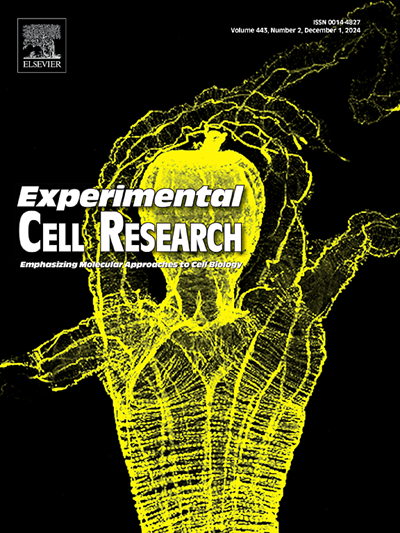低浓度槲皮素通过TrkB-ERK1/2信号通路促进骨折愈合过程中BDNF表达和成骨细胞分化
IF 3.3
3区 生物学
Q3 CELL BIOLOGY
引用次数: 0
摘要
槲皮素(Que)是类黄酮中的一种,在骨折愈合中起作用,而脑源性神经营养因子(BDNF)和酪氨酸激酶受体激酶B (TrkB)也被证明参与其中。Que和BDNF信号通路在神经系统中是相互关联的,但它们在骨折愈合和成骨细胞分化中的相互调节机制尚未被研究。我们通过细胞实验和骨折动物模型,初步阐明Que和BDNF在成骨细胞分化和骨折愈合中的作用和信号机制。细胞实验证实,低浓度Que (0.01-5 μM)促进成骨细胞分化和成骨相关标志物COL1A1、ALP、Runx2的表达;激活EKR1/2,促进BDNF (P <;0.05);Que与外源性BDNF联合使用促进成骨分化的效果最强(P <;0.05);进一步的机制研究发现,erk1 /2特异性化学抑制剂PD98059在Que (P <;trkb特异性化学抑制剂K252a在Que的作用下抑制ERK1/2的激活、BDNF的表达和成骨细胞分化标志物的表达(P <;0.05)。在骨折动物模型中,Que (100 mg/kg)显著促进骨折愈合,增加骨痂处BDNF表达。因此,低浓度的Que通过TrkB-ERK1/2-BDNF信号通路促进成骨分化,进而影响骨折愈合。本文章由计算机程序翻译,如有差异,请以英文原文为准。
Low concentration of quercetin promotes BDNF expression and osteoblast differentiation during fracture healing via TrkB-ERK1/2 signaling pathway
Quercetin (Que), one of the flavonoids, plays a role in fracture healing, while brain-derived neurotrophic factor (BDNF) and tyrosine kinase receptor kinase B (TrkB) have also been shown to be involved. Que and BDNF signaling pathways are interrelated in the nervous system, but their reciprocal regulatory mechanisms in fracture healing and osteoblast differentiation have not yet been studied. We conducted cellular experiments and fracture animal models to preliminarily clarify the roles and signaling mechanisms of Que and BDNF in osteoblast differentiation and fracture healing. Cellular experiments confirmed that low concentrations of Que (0.01–5 μM) promoted osteoblast differentiation and the expression of osteogenesis-related markers, including COL1A1, ALP and Runx2; activated EKR1/2 and promoted the expression of BDNF (P < 0.05); and that the combination of Que and exogenous BDNF had the strongest effect on promoting osteogenic differentiation (P < 0.05); further mechanistic studies revealed that, the ERK1/2-specific chemical inhibitor PD98059 significantly inhibited the expression of BDNF and osteogenic differentiation markers under the action of Que (P < 0.05), whereas the TrkB-specific chemical inhibitor K252a inhibited the activation of ERK1/2, the expression of BDNF, and the expression of osteoblast differentiation markers under the effect of Que (P < 0.05). In fracture animal models, Que (100 mg/kg) significantly promoted fracture healing and increased BDNF expression at the bone callus. Thus, low concentrations of Que promote osteogenic differentiation through the TrkB-ERK1/2-BDNF signaling pathway, which in turn affects fracture healing.
求助全文
通过发布文献求助,成功后即可免费获取论文全文。
去求助
来源期刊

Experimental cell research
医学-细胞生物学
CiteScore
7.20
自引率
0.00%
发文量
295
审稿时长
30 days
期刊介绍:
Our scope includes but is not limited to areas such as: Chromosome biology; Chromatin and epigenetics; DNA repair; Gene regulation; Nuclear import-export; RNA processing; Non-coding RNAs; Organelle biology; The cytoskeleton; Intracellular trafficking; Cell-cell and cell-matrix interactions; Cell motility and migration; Cell proliferation; Cellular differentiation; Signal transduction; Programmed cell death.
 求助内容:
求助内容: 应助结果提醒方式:
应助结果提醒方式:


